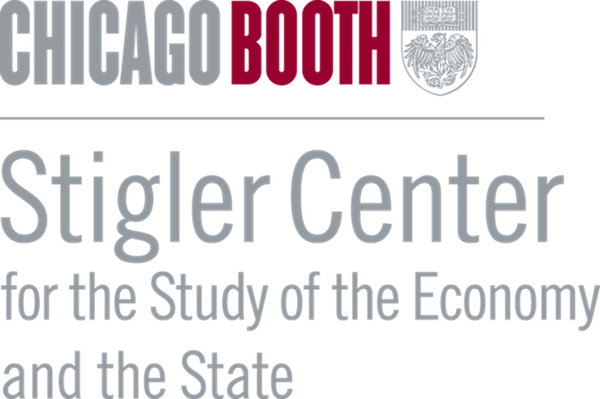In new research, Xuelin Li, Sijie Wang, Jiajie Xu, and Xiang Zheng find that the involvement of specialized venture capital firms influences a biotech startup’s drug portfolio by focusing research and development on fewer products.
Most life science entrepreneurs agree that venture capital (VC) financing is essential for startup growth. However, VCs in this sector use different investment approaches. Smaller, specialized VCs rely on their expertise in a specific therapeutic area and are deeply involved in the day-to-day operations of their portfolio companies. In contrast, larger VCs maintain a diversified portfolio across various fields and often take a more hands-off approach to startup growth decisions.
For a new founder, choosing the right type of VC partner is not straightforward. Understanding the implications of different VC strategies is critical. While most discussions focus on networking, human capital, and professionalization, one often overlooked area is strategic pipeline prioritization.
The story of Acerta Pharma in 2014 illustrates this point. At the time, Acerta’s lead candidate, acalabrutinib (later approved as Calquence), faced a key decision: pursue a common cancer (CLL) where a competitor already had a product on the market, or pivot to a rarer cancer (MCL) with a faster FDA approval pathway. In everyday language, we often refer to a “drug” as a single product, but scientifically, a compound like acalabrutinib can be effective against multiple diseases, also known as indications, depending on its mechanism of action. Even for the same compound, regulatory approval is granted separately for each indication, based on the risk–benefit profile demonstrated in clinical trials. Ideally, Acerta would simultaneously develop both drugs to maximize the chance of success in getting them through the clinical trials. Like many early-stage biotech firms, Acerta lacked the resources to pursue both.
Specialized VCs often influence, or at times override, such prioritization decisions. In Acerta’s case, the founding CEO advocated for the larger market opportunity, while the lead VC pushed for the quicker approval route. The disagreement led to the CEO’s replacement. Although Acerta secured accelerated approval for MCL in 2017, early sales were limited—under $100 million—due to the smaller market. The company was later acquired by AstraZeneca, and in 2019, acalabrutinib was approved for the broader leukemia market, validating the founder’s original vision. By 2023, annual sales reached $2.5 billion.
Acerta’s story reflects a common tension between founders and investors in the life science industry, a dynamic we explore in new research analyzing hundreds of biotech startups titled “How Does VC Activism Backfire in Startup Experimentation?” Most founders begin with a portfolio of roughly a dozen early-stage drug projects. By the time a startup goes public, that portfolio is typically narrowed to just one or two lead candidates. But this process isn’t always a natural selection of the most promising ideas. Instead, it is often shaped by intense VC activism. The study finds that startups backed by smaller, highly focused VC funds, which tend to be the most actively involved, experience greater board interference and more frequent executive turnover. At the same time, such active involvement can have a nuanced impact on long-term success.
The data reveal a clear trade-off. On one hand, when startups backed by specialized VCs achieve a successful exit, they tend to have more mature pipelines and are more likely to become blockbuster deals. Most biotech IPOs are underpriced, meaning the offer price is set below the firm’s estimated fair value to account for business uncertainty. However, startups backed by specialist VCs (top 25% by portfolio concentration) exhibit nearly 11% less underpricing than those backed by generalists (bottom 25%), allowing them to raise more capital at valuations closer to their true worth.
On the other hand, biotech startups funded by these hands-on, concentrated investors are significantly less likely to reach a major exit in the first place. The study finds that their IPO success rate is only about 2.8%, roughly eight times lower than that of similar startups backed by large, diversified VC firms (23%). What drives this trade-off is the pipeline prioritization decision. Instead of allowing multiple projects to compete and evolve, active VCs often pressure startups to focus resources on one chosen idea early on, sidelining other candidates before their potential is fully tested. This approach enables the company to mature its lead asset ahead of an IPO, reducing technological uncertainty for investors. However, life science projects face extremely high failure rates. When that lead candidate fails, as it often does, the startup is left without viable alternatives and the entire enterprise can collapse. Ultimately, this pipeline prioritization strategy reshapes the risk–return profile of entrepreneurial activity in the life sciences.
The research provides additional evidence at the project level. Because active VCs prioritize only a few projects, companies backed by specialized investors are significantly less likely to advance their average R&D pipeline to the next trial phase. VC activism is also associated with a higher rate of permanent project discontinuation, but only for reasons related to pipeline prioritization. These suspensions cannot be attributed to a lack of funding or poor efficacy, suggesting that specialized VCs are not constrained by limited capital and did not select low-quality firms.
Moreover, the specific project chosen by active VCs has direct implications for the drugs that ultimately reach patients. Unfortunately, some of the shelved projects might have been the true game-changers for society, as VCs often have different incentives when selecting which project to prioritize. In fact, Acerta planned to license in acalabrutinib to target autoimmune diseases, but its VC investor pushed the company to prioritize oncology instead. Venture funds operate on a ticking clock, typically aiming to return capital to investors within ten years. In biotech, however, the development of a truly novel therapy can take even longer. This mismatch means VCs often favor projects that align with their fund’s timeline. The research finds that VC pressure is especially pronounced when a fund is approaching liquidation, potentially favoring faster-developing technologies over more ambitious ones.
Another often-overlooked motive is portfolio strategy. A VC firm may invest in several startups within the same broad therapeutic area. The same VC investor of Acerta had invested in ibrutinib (the CLL competitor drug for acalabrutinib), and a different PI3K delta inhibitor for oncology from Amgen. To avoid internal competition, the firm may discourage overlapping efforts. For example, if two portfolio companies are developing potential common leukemia treatments, the VC may pressure one to pivot toward a different indication to prevent direct competition. While this approach reduces portfolio-level risk, it can limit each startup’s ability to pursue the most promising or ambitious opportunity. The study finds that startups with very active VCs tend to concentrate on fewer disease areas. In effect, VCs are managing risk at the portfolio level, but the individual startup loses the freedom to explore multiple directions. What makes strategic sense for the VC’s overall portfolio may ultimately constrain the startup’s ability to innovate.
These findings add nuance to the ongoing debate about the role of venture capital oversight in innovation. VC supervision is not inherently harmful; in fact, it provides essential funding, expertise, and operational discipline that help transform scientific discoveries into real products. However, the research highlights an important caveat about timing: when investor involvement becomes too intense too early, it can distort the experimental process that drives breakthrough innovation. To balance focus with flexibility, the ecosystem could benefit from more patient capital. Investment structures aligned with biotech’s long development timelines, such as impact funds or longer-duration vehicles, can ease the pressure for quick exits.
Policy can also play a role in mitigating the unintended consequences of aggressive VC activism. Public R&D grants could be structured to support secondary projects within startups, preserving promising ideas that might otherwise be cut. Platforms that allow startups to spin off or license shelved projects can give high-potential innovations a second chance. These interventions help ensure that valuable scientific opportunities are not lost to narrow strategic priorities.
Authors’ Disclosures: The authors report no conflicts of interest. You can read our disclosure policy here.
Articles represent the opinions of their writers, not necessarily those of the University of Chicago, the Booth School of Business, or its faculty.






